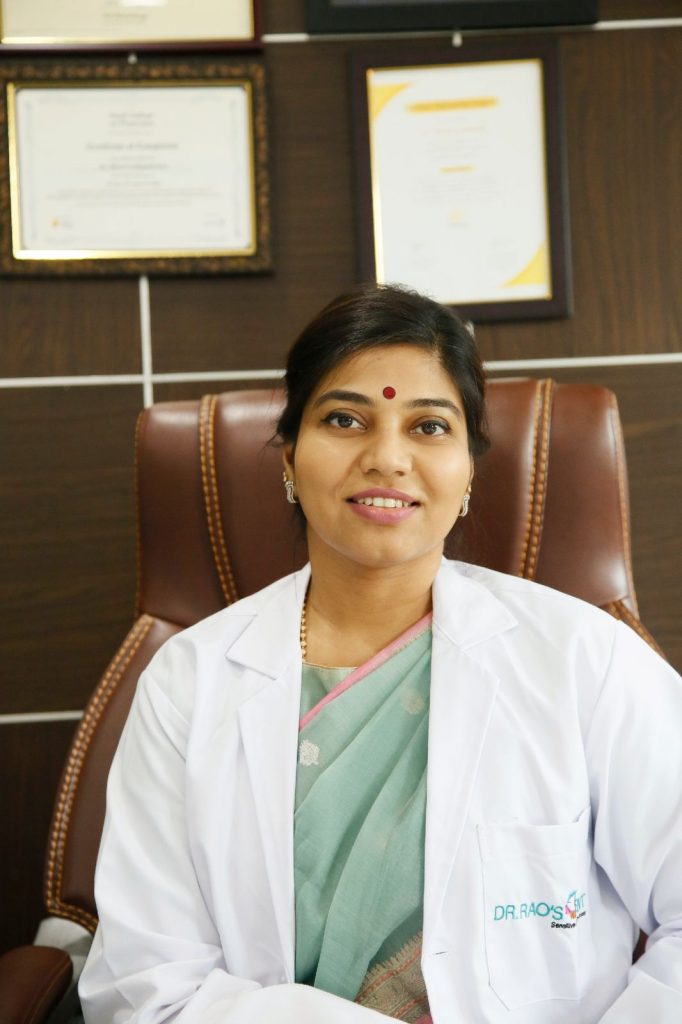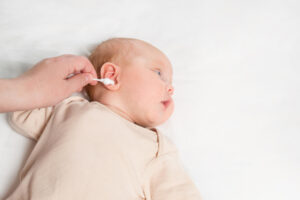Introduction to cochlear implants

In the discourse presented here, Dr. Shree Rao provides insights into Best Practices for Cochlear Implant Maintenance. She is the Best Doctor for Cochlear Implants.
Cochlear implants stand as remarkable innovations, offering transformative solutions for individuals contending with severe hearing impairments. Diverging from traditional hearing aids that amplify sound, cochlear implants operate by directly stimulating the auditory nerve, establishing a more direct pathway for sound signals to reach the brain.
This comprehensive guide navigates the intricate landscape of cochlear implants, exploring fundamental principles and the transformative impact on recipients’ lives. At the forefront of this exploration is the expertise of professionals such as Dr. Shree Rao, a leading authority in the field, whose commitment to advancing auditory healthcare has been instrumental. Join the journey through the intricacies of cochlear implants, where science, technology, and compassionate care converge to unlock the world of sound for those facing profound hearing challenges.
Understanding the components
At the forefront of Cochlear Implant Technology is the external speech processor, a compact yet powerful device responsible for capturing and processing sound from the environment. Equipped with advanced algorithms, this component discerns and filters incoming audio signals, transforming them into digital information that is subsequently transmitted to the internal components of the implant.
The microphone array, an integral part of the external unit, serves as the initial receptor of sound waves. Positioned discreetly on the user’s ear, this array captures acoustic signals and converts them into electrical impulses. The efficiency of this conversion is crucial for the accurate representation of auditory information.
The translated digital signals are then subjected to a sophisticated speech coding strategy. This strategy plays a pivotal role in deciphering the diverse frequencies and intensities of sounds. By employing advanced algorithms, the coding strategy categorizes and organizes the auditory information, ensuring a coherent and natural perception of sound for the implant recipient.
Once the digital signals are encoded, they are transmitted through the skin to the internal components via a transmitter coil. This coil, positioned externally over the recipient’s skin, facilitates the wireless communication between the external and internal elements of the cochlear implant system.
The internal receiver, surgically implanted beneath the skin, receives the encoded signals from the external transmitter coil. Connected to the receiver is the electrode array, an intricate component that extends into the cochlea. This array comprises electrodes designed to stimulate the auditory nerve fibers selectively, replicating the natural process of signal transmission within the ear.
Customization of the cochlear implant’s performance is achieved through the meticulous programming of the speech processor. Audiologists, armed with in-depth knowledge of the recipient’s unique auditory needs, fine-tune the device to optimize its functionality and adaptability, ensuring a tailored and effective auditory experience.
Daily care routine
Maintenance of external components
Regularly inspect the external components, including the microphone array and speech processor, for any signs of dirt, moisture, or damage. Ensure that the surfaces are gently wiped with a soft, dry cloth to maintain cleanliness. Caution should be exercised to prevent any abrasive contact that may compromise the integrity of these components.
Hygiene of the microphone array
Emphasize meticulous hygiene for the microphone array. The recipient or their caregiver should clean the microphone ports using a designated tool or a cotton swab. It is important to ensure that these ports remain unobstructed to guarantee optimal sound reception.
Battery status check
Routinely check the battery status of the speech processor. The recipient should replace batteries according to the manufacturer’s guidelines or recharge the device as needed. A reliable power source is fundamental to sustaining uninterrupted auditory function.
Protection from environmental factors
Encourage the implant recipient to take preventive measures to shield the cochlear implant from environmental factors. Protective covers or accessories should be used when engaging in activities such as swimming or participating in water-based sports to safeguard against moisture infiltration.
Secure cable management
Verify the integrity of cables and connections between external components. Ensure that cables are securely fastened and free from any entanglements or kinks. This practice promotes the longevity of the equipment and ensures consistent signal transmission.
Skin hygiene
Emphasize the importance of maintaining proper hygiene around the implant site. The recipient should cleanse the skin gently with mild soap and water, ensuring that no residue accumulates around the transmitter coil. This practice prevents skin irritation and ensures optimal communication between external and internal components.
Avoiding impact and physical strain
Caution should be exercised in activities that may expose the cochlear implant to impact or physical strain. The recipient should avoid accidental bumps or falls that could potentially dislodge or damage the internal components.
Regular audiologist check-ups
Stress the significance of scheduling regular appointments with the audiologist for comprehensive checks and adjustments. Professional oversight ensures that the cochlear implant is functioning optimally and allows for any necessary fine-tuning to meet the individual needs of the recipient.
Educational support
Provide educational support to the recipient and caregivers regarding the proper care and maintenance of cochlear implants. Empowering individuals with knowledge enhances their ability to proactively engage in the daily care routine.
Troubleshooting common issues

No sound or low volume
If the cochlear implant produces no sound or exhibits unusually low volume, the user should first check the battery status of the external speech processor. Fresh batteries should be ensured, or the device should be recharged if applicable. Additionally, the user should inspect the microphone array for blockages or damage and clean the microphone ports as needed.
Intermittent sound interruptions
Intermittent sound interruptions may arise from issues with cable connections. The user should verify that all cables are securely fastened, with no signs of wear or damage. If the issue persists, consideration should be given to testing with an alternative cable, and the audiologist should be contacted for further assistance if necessary.
Issues with speech processor programming
In cases where the recipient perceives a discrepancy in sound quality or clarity, it may be attributed to speech processor programming. An appointment with the audiologist should be scheduled for a comprehensive assessment and potential adjustments to the programming settings to better align with the recipient’s evolving needs.
Environmental challenges – moisture and humidity
Cochlear implants are susceptible to moisture-related issues. If the device comes into contact with moisture, the user should promptly dry the external components and, if necessary, use a protective cover during activities involving water. For persistent issues, the manufacturer or the audiologist should be contacted for guidance on moisture mitigation strategies.
Discomfort or irritation at the implant site
Recipients experiencing discomfort or irritation at the implant site should exercise caution in cleaning the area. Mild soap and water should be used to maintain proper hygiene, avoiding any harsh chemicals. If irritation persists, consultation with the audiologist is recommended to rule out potential allergic reactions or other underlying concerns.
Battery draining quickly
Rapid battery drainage may signal a malfunction in the power supply system. Users should ensure that the batteries are of high quality and within their expiration date. If the issue persists, consultation with the audiologist is recommended to investigate potential causes, such as excessive power consumption or inefficiencies in the speech processor.
Inconsistent wireless connectivity
For cochlear implants with wireless capabilities, inconsistent connectivity may arise. Users should verify that the external components are within the recommended range for wireless communication. If problems persist, consultation with the audiologist is recommended to assess potential interference sources and explore solutions for improved connectivity.
Unintelligible or distorted sounds
Recipients experiencing unintelligible or distorted sounds should first inspect the speech processor and microphone array for any visible damage. Subsequently, an appointment with the audiologist should be scheduled to address potential issues with the internal components or to fine-tune the device for optimal sound clarity.
Conclusion - Cochlear Implant Maintenance
The journey towards sustained hearing excellence through cochlear implants is marked not only by the initial transformative procedure but also by meticulous maintenance practices. Dr. Shree Rao’s expertise illuminates the path toward optimal implant performance, emphasizing that ongoing care is paramount for long-term success. As individuals commit to these best practices—regular check-ups, effective cleaning routines, and timely troubleshooting—they fortify the bridge between restored hearing and enduring auditory well-being. In the hands of professionals like Dr. Shree Rao, the symphony of sound orchestrated by cochlear implants continues to resonate, enriching lives and fostering a future filled with the vibrant cadence of shared experiences.

Why consult EarSurgeon, Dr. Shree Rao?
Dr. Shree Cuddapah Rao is acclaimed as one of the best pediatric ENT specialists in Hyderabad. With 10+ years of deep domain experience in the field of ENT, she is the director at Dr. Rao’s ENT Super Specialty Hospital. She underwent specialized training in Rhinoplasty / Facial Plastic surgery at Singapore General Hospital, Singapore. She also underwent advanced training in cochlear implant surgery under Padmashri Dr. Milind V Kirtane and had a Fellowship in a cochlear implant. Having performed over 200 successful cochlear implants for patients worldwide, Dr. Shree Cuddapah Rao is also the recipient of several prestigious accolades in the domain of ENT. Dr. Shree Rao is one of the best ent doctor in hyderabad, to book an appointment click here.
Are you looking for
then you have landed at right place!







